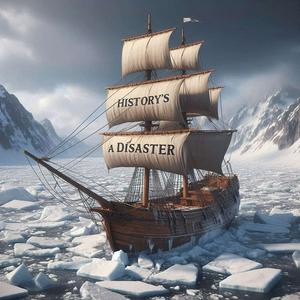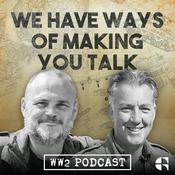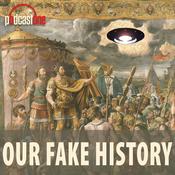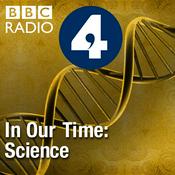64 episodes

Harrison Okene: Survival Beneath The Waves
04/1/2026 | 15 mins.
Send us a textThe ocean doesn’t announce its plans. One wave hit, a tugboat rolled, and a ship’s cook found himself sealed in a bathroom-sized air pocket on the seafloor for 62 hours, listening to distant engines and his own breath. What happened next is a sharp study in fear, ingenuity, and the thin margin between life and loss.We trace the Jascon 4’s final minutes off the coast of Nigeria, the chaos of inverted corridors, and the brutal math of survival: conserve oxygen, fight hypothermia, and outthink rising carbon dioxide. Harrison O’Keene turns a vent shard into a pry bar, coveralls into a lifeline, and broken wood into a raft just high enough to lift his chest from icy water. While early responders mark the wreck and withdraw, saturation divers mobilize from miles away, ready for body recovery—until a hand taps a helmet in the dark. From that shock comes a surgical rescue: a diving bell transfer, three days in decompression, and a medical close call with hypercapnia and the bends.The story doesn’t end at the surface. We follow the aftershocks—media frenzy, nightmares, and a car crash that flips him into water again—into a decision most would fear: learn to dive for real. Training rewires trauma into craft. Harrison builds a career in subsea construction at depths up to 150 feet, finds new love, and chooses a home by the water he refuses to fear. Along the way, we unpack the gear, physics, and protocols that make deep rescue possible, from umbilicals and helmets to decompression schedules, while exploring the mental habits that keep a survivor steady when the lights go out.If you’re drawn to true survival, maritime disasters, and the mindset that turns panic into a plan, this one will stay with you. Follow the show, share it with a friend who loves high-stakes stories, and leave a rating or review to help others find it.Facebook: historyisadisasterInstagram: historysadisasteremail: [email protected] Special thank you to Lunarfall Audio for producing and doing all the heavy lifting on audio editing since April 13, 2025, the Murder of Christopher Meyer episode https://lunarfallaudio.com/

Tangiwai Christmas Eve Rail Disaster
28/12/2025 | 20 mins.
Send us a textA night train full of families, gifts, and holiday plans sped toward a bridge that wasn’t there anymore. We follow that chilling arc—from a crater lake’s quiet failure on Mount Ruapehu to a lahar roaring down the Whangaehu River, shredding concrete piers and erasing the Tangiwai bridge in darkness—then step into the locomotive cab as the crew sees a frantic flashlight beam and fights physics with brakes and sand, seconds too late.We unpack how New Zealand’s landscape shapes its risks and why a non-eruptive volcanic flood can be deadlier than fire. You’ll hear the human side first: the postal worker who ran toward danger, the guard and passengers who smashed windows to pull people free, the young constable who took command until reinforcements arrived, and the Waiouru camp soldiers and local farmers who turned a chaotic riverbank into an improvised rescue line. At dawn, the destruction told a national story—twisted carriages, oil-slick mud, presents strewn along the banks—while a country grappled with identification in summer heat, coroner’s courts under pressure, and grief spread from private funerals to a state ceremony for the unknown.We also confront a hard truth about design and class: second-class cars sat closest to the locomotive and bore almost all the fatalities. From those numbers emerged lessons that took decades to implement. We detail the lahar warning systems installed upstream—radar level sensors, RF links, fail-safe signaling, and radio alerts—and how the 2007 lahar validated the approach by stopping trains and traffic before impact. Along the way, we share moments of chance that saved lives, the awards honoring civilian courage, and the memorials that keep names alive.If this story moved you, follow our show, share this episode with a friend, and leave a quick rating or review. Got questions or a topic you want us to tackle? Email [email protected] and connect with us on Facebook, Instagram, TikTok, and YouTube.Facebook: historyisadisasterInstagram: historysadisasteremail: [email protected] Special thank you to Lunarfall Audio for producing and doing all the heavy lifting on audio editing since April 13, 2025, the Murder of Christopher Meyer episode https://lunarfallaudio.com/

The 1977 Lynyrd Skynyrd Plane Crash
21/12/2025 | 18 mins.
Send us a textA headlining tour, a hit record, and a tired airplane came together over Mississippi—and the result reshaped rock history. We trace Lynyrd Skynyrd’s 1977 crash from the first red flags to the last radio call, clarifying what went wrong and why the loss was avoidable. The story starts with a band at full speed after releasing Street Survivors, then zooms into the logistics that carried the risk: a 1948 Convair 240 with a long maintenance trail, visible engine flames on earlier flights, and a flight crew other artists had already declined to trust.We walk through the chain of decisions on the Greenville-to–Baton Rouge leg: reliance on a faulty fuel gauge, a failure to manually verify fuel, and a reluctance to declare an emergency even as the fuel margin evaporated. Step by step, options narrowed until both engines quit and the aircraft slid through treetops toward a blacked-out swamp. You’ll hear how survivors fought through wreckage, how locals and helicopter crews pieced together a rescue through mud and creek water, and how identification challenges added to the chaos. The human side matters here—fear, grit, and the strange quiet after the crash—alongside the mechanics of how flights stay safe or fail.We dig into the NTSB’s conclusions on fuel exhaustion, crew inattention, and deficient planning, plus the right-engine issues that likely drove abnormal fuel burn and confusion. We also evaluate later claims that conflict with the official record, separating memory, myth, and verified fact. Finally, we connect the aftermath to cultural legacy: the album cover change, the mourning across the rock community, the reunion years later, and the Hall of Fame recognition that preserved the music even as it memorialized the cost.If this story moved you, follow the show, share it with a friend, and leave a rating or review to help more listeners find these deep dives into how history turns on small choices.Facebook: historyisadisasterInstagram: historysadisasteremail: [email protected] Special thank you to Lunarfall Audio for producing and doing all the heavy lifting on audio editing since April 13, 2025, the Murder of Christopher Meyer episode https://lunarfallaudio.com/

The Ghost Ship Mary Celeste
14/12/2025 | 27 mins.
Send us a textA silent ship in open water, a missing crew, and a century of wild theories—this is the story that made “ghost ship” part of our vocabulary. We pull the lens wide, starting with the Mary Celeste’s earlier life as the Amazon, a fast, carvel-built brigantine whose career seemed shadowed by bad luck: a captain’s sudden death, collisions, a grounding, and a salvage. When Benjamin Briggs steps aboard as owner-captain, he brings discipline, family, and a small, trusted crew to carry denatured alcohol from New York to Genoa. The plan is routine; the Atlantic is not.We follow the Dei Gratia’s eerie encounter with the Mary Celeste: sails ragged, rigging loose, cabins soaked, one hatch secured, lifeboat gone, and no bodies. The logbook offers no menace, the hold has water but not doom, and navigation instruments are missing from the captain’s cabin—clues of a deliberate evacuation. From there, we step into Gibraltar’s slow-motion courtroom theater. Attorney General Frederick Solly-Flood chases mutiny and murder, but the evidence refuses to cooperate. Broken compass glass, scattered galley gear, and alleged blood give way to the simpler forces of storm and time. The court praises the salvors, awards a thin payout, and leaves the central question open.We confront the theories that never die—pirates, sea monsters, aliens—then test the ones that might. A disabled pump, rough seas, and a misread of flooding would rattle any captain. More compelling is the vapor risk from nine damaged alcohol barrels. A modern lab demonstration shows how a pressure wave flash can erupt without soot or charring, exactly matching the ship’s clean surfaces. Picture the call: lower the boat, tow astern, wait out the fumes, and return. In worsening weather, a towline parts, and caution becomes catastrophe. No villains, no melodrama—just the unforgiving math of seamanship.If you love maritime mysteries, careful debunking, and the human choices behind famous legends, this deep dive is for you. Hit play, subscribe for more history without the hype, and leave a review to tell us your own Mary Celeste theory.Facebook: historyisadisasterInstagram: historysadisasteremail: [email protected] Special thank you to Lunarfall Audio for producing and doing all the heavy lifting on audio editing since April 13, 2025, the Murder of Christopher Meyer episode https://lunarfallaudio.com/

The SeaWorld Gold Coast Mid-Air Collision
07/12/2025 | 21 mins.
Send us a textTwo scenic helicopters crossed paths over the Gold Coast and collided in clear daylight, exposing weak links in see-and-avoid, radio reliability, and ground procedures. We trace the timeline, the emergency response, and the investigation, then lay out practical fixes for safer sightseeing flights.• operator expansion without matched safety assessment• aircraft, pilot backgrounds, and flight setup• timeline from liftoff to collision over the sandbar• passenger alerts, impact mechanics, survivability• mass-casualty response and scene control• ATSB methods: video, wreckage mapping, interviews• see-and-avoid limits under VFR in busy corridors• faulty antenna, missed calls, ground miscommunication• ship traffic as an attention splitter on approach• regulatory reviews, legal actions, and inquest status• concrete mitigations for comms, patterns, and trainingFacebook: historyisadisasterInstagram: historysadisasteremail: [email protected] Special thank you to Lunarfall Audio for producing and doing all the heavy lifting on audio editing since April 13, 2025, the Murder of Christopher Meyer episode https://lunarfallaudio.com/
More History podcasts
Trending History podcasts
About History's A Disaster
Listen to History's A Disaster, The Ancients and many other podcasts from around the world with the radio.net app

Get the free radio.net app
- Stations and podcasts to bookmark
- Stream via Wi-Fi or Bluetooth
- Supports Carplay & Android Auto
- Many other app features
Get the free radio.net app
- Stations and podcasts to bookmark
- Stream via Wi-Fi or Bluetooth
- Supports Carplay & Android Auto
- Many other app features


History's A Disaster
download the app,
start listening.






































